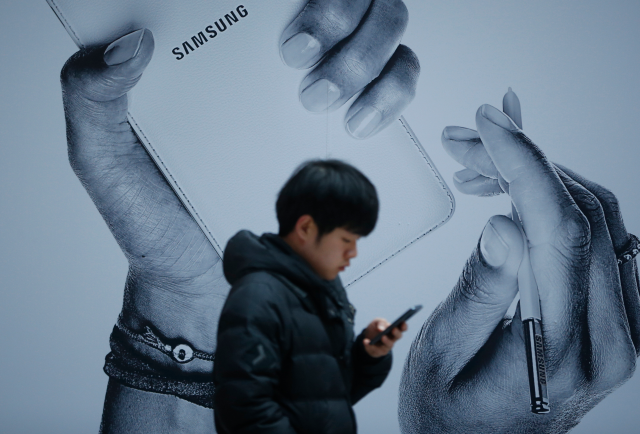By Samuel Woodhams | Digital rights researcher and journalist
| Targeted online advertisements are impossible to ignore. Ads based on our browsing history, geolocation, and personal information appear constantly on our social media feeds, news articles, and streaming platforms. As the authors of a new report on the advertising surveillance industry put it: “Targeted advertising is unavoidable for anyone who owns a smartphone or goes online.” But targeted advertising isn’t just confined to the web. Increasingly, it’s also being used in traditional, physical forms of advertising. Facial detection billboards High-definition billboard screens beam advertisements to millions of people a day. They’re in shopping centres, on public transport, and at major landmarks around the world. While they’ve existed for years, some can now target specific sections of society by using technology that’s more often associated with law enforcement agencies. Many digital billboards now have sophisticated built-in cameras that can monitor the public looking up at them. The technology is capable of analysing peoples’ faces – inferring someone’s age, sex, and supposedly even their emotional state – and deciding what ads to display. In one such example, Ocean Outdoor, a UK-based advertising company, boasted of using their car detection technology to deliver ads from Bermuda’s tourist board to “drivers of prestige cars which are less than four years old and valued at more than £40,000”. It was recently removed from the company’s website after researchers at Big Brother Watch included it in their new report, The Streets Are Watching You, although archived versions of the page exist. Big Brother Watch found similar surveillance-enabled billboards in cities including London, Manchester, Belfast and Glasgow. But it’s far from a UK-specific issue, with manufacturers of the technology based in countries from France to the United States to Japan.
People stand on a platform of the Shibuya train station as digital advertising displays illuminate a junction in central Tokyo, Japan, March 14, 2016. REUTERS/Thomas Peter |
|
While the types of data collected and processed varies, they all raise privacy and ethical concerns – from issues of consent and predictive analytics, to the right to opt out. Much like the facial recognition technology discussed last week, these scanning tools are also likely to be prone to biases and inaccuracies. Researchers at Big Brother Watch argue that these billboards “erode individuals’ ability to go about their daily lives discreetly.” Despite this, they’ve been used to deliver ads from established charities, the armed forces, and public health organisations.
|
Harvesting mobile data
Advertising companies are not just deploying facial detection tools to improve conversion rates. They’re also buying huge amounts of data for programmatic advertising which can target hyper-specific sections of society, such as “food-loving, frequent eat-out diners” or “18-34-year old women who shop at high-street fashion brands.” The data is sourced from millions of apps, as well as from mobile phone operators and data brokers, who amalgamate huge, varied streams of data to sell to their customers. According to Big Brother Watch’s report, the German advertising company, AdSquare, collects spatial, movement and audience data to help improve physical programmatic advertising. This may include collecting anonymised data on where people are, where they’ve been, and what their interests are. While the advertisements we see on billboards may be influenced by what we’ve done online, the reverse can also be true. As the researchers note, “walking past a billboard can now trigger a targeted advert on an individual’s mobile phone.”
A passenger using his mobile phone walks past an advertisement promoting Samsung Electronics’ Galaxy Note 3 at its exhibition hall at a railway station in Seoul November 25, 2013. REUTERS/Kim Hong-Ji |
AdTech and surveillance-enabled policing
Often, the surveillance techniques and tools used by AdTech companies are considered a wholly separate issue to the police’s use of similar tools. But while different laws regulate their use, many of the companies providing data to ad companies are also working with the police and military. In this way, the mass collection, analysis and sale of data from peoples’ digital footprints not only serves to increase the invasive practice of targeted advertising, but also raises the risk of surveillance-enabled policing, which has repeatedly been shown to have discriminatory impacts. In a particularly disturbing event from 2020, reporters at VICE found that a Muslim prayer app was collecting and sending location data of its users to the US-based company, X-mode, which then sold the data to contractors, including the U.S. military. Last year, the company was rebranded as OutLogic. Law enforcement agencies and advertisers essentially want the same thing: more information about more people, all of the time. Although for different purposes, at the heart of the issue is the companies collecting, analysing and selling this data. To counter the rise of invasive targeted physical advertisements, as well as dystopian surveillance-enabled policing, it’s worth recognising the role of the opaque companies that extract, compile and sell our personal information to prop up both. Any views expressed in this newsletter are those of the author and not of Context or the Thomson Reuters Foundation. |



